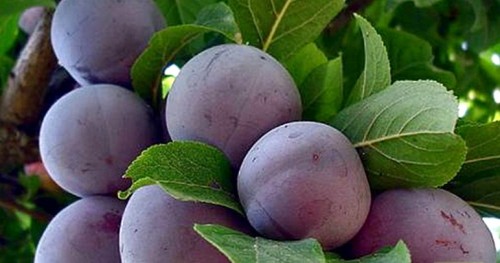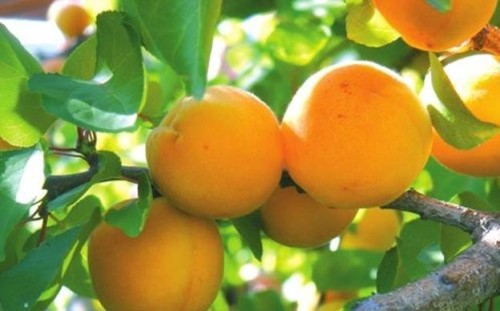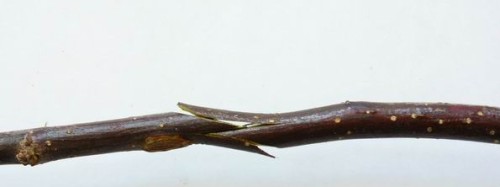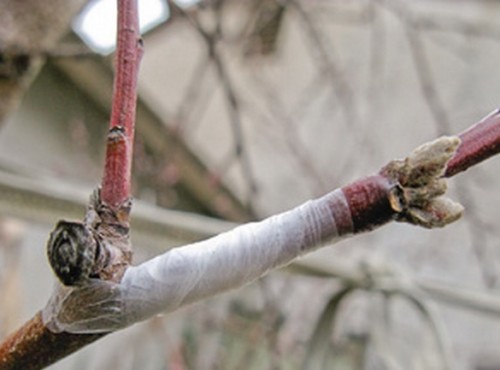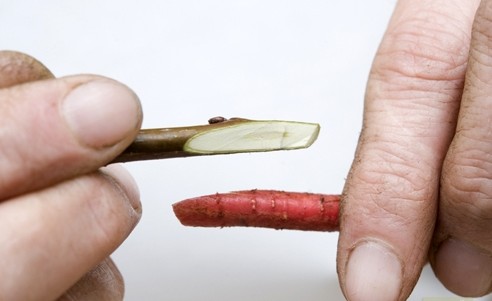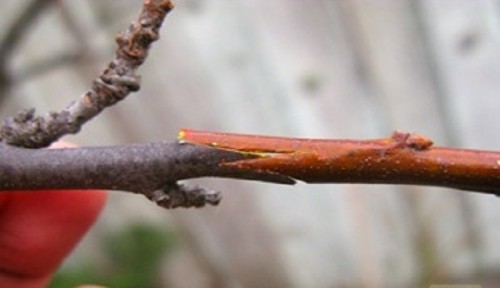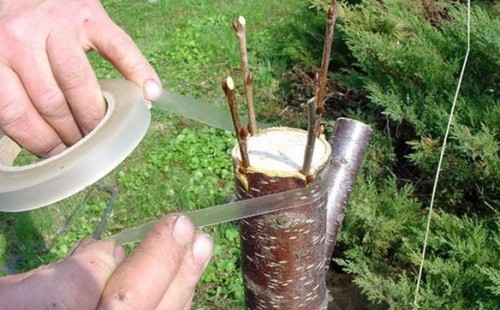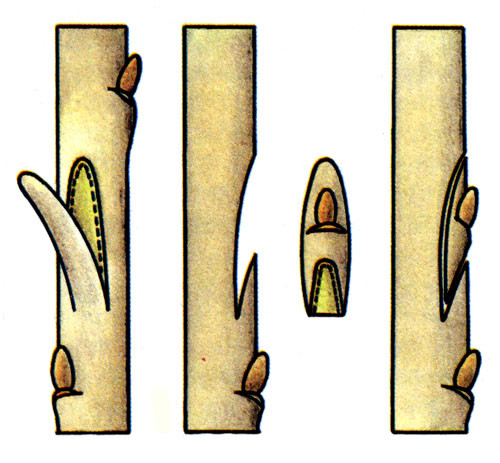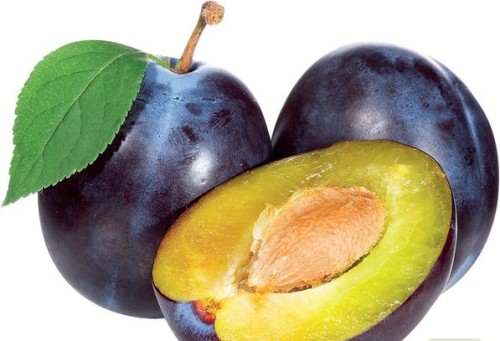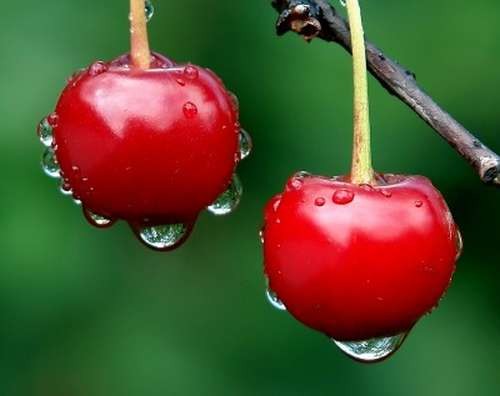
Plum Vaccination: Step-by-step instructions, Useful Tips Plot.
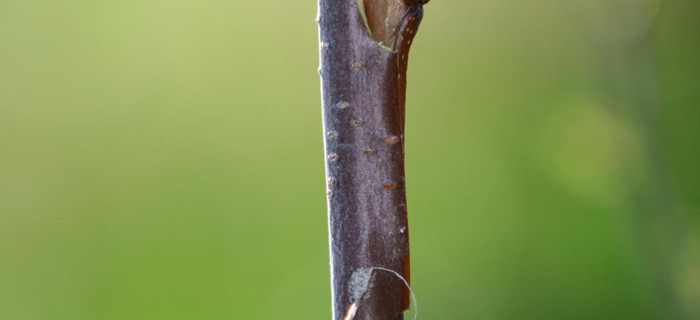
The vaccination of fruit trees is perhaps the most fascinating and exciting occupation of all garden work. In addition to practical benefits, it brings an inexplicable joy and the opportunity to feel like the Creator. This is quite simple. It is enough to learn a number of rules and master several techniques.
Content
- What is vaccination
- What does the vaccination of fruit trees need
- Tools required for plum vaccination
- The main stages of grafting
- How to prepare cuttings
- How to prepare a diving for vaccination
- How to prepare a brow for vaccination
- How to perform a cut on a cut
- How to make vaccination strapping
- What should be the caring for the tree after vaccination
- Plum vaccination on the plum, video
- How to make the vaccination of fruit trees with a cutlets (copuling)
- How to make a vaccine eye (eyelid)
- What is the difference between vaccinations on bone trees
What is vaccination
The vaccination of trees is called the method of their vegetative breeding, by splicing a lead and stock. The cruise is part of the cultural variety plant used for vaccination - a cutlery or kidney (eye). In stock - this is a seedling or an adult tree, which is vaccinated. The place for vaccination on the tree-stock may be a branch, trunk or even the remaining viable penet. The advantage of vegetative reproduction is that all signs of varieties are fully saved. In addition, the vaccination is often the only way to reproduce a culture.
What does the vaccination of fruit trees need
On one tree it is allowed to make up to 40 vaccinations. 5-8 are more often limited. Thus, you can get the fruits of different varieties on one tree. If you put a few trees, observing the necessary interval of at least 3 meters, it will take a significant area. Thanks to the vaccination of fruit trees, the territory of the site is used more rationally, and the released place can be highlighted under a flower garden, a green lawn or a rest corner. The vaccination reduces the deadlines for the onset of the first fruiting. On the young saplings, the fruits will appear only for 3-4 years, while the grafted twigs will give the crop already in the next summer. Southern varieties of drain, cherries and apricots do not tolerate harsh winters. A vaccination on a more hardy dive allows you to adapt the southern plant to adverse climatic conditions. Many cherry varieties give a powerful pig loose, which fight is very difficult. You can solve this problem by putting a cherry on the plum. And finally, the cost of brought cuttings is several times less than seedlings, and the neighbors in the country will share the brought material, then the vaccination will cost free.
Only related plants can be vaccinated, bone-bone compatible with bone, seeds with seeds. Kontyakov belongs: plum, cherry, apricot. To the seed apple tree, a pear, hawthorn, Irga.
Tools required for plum vaccination
- Special vaccination, sharpened as a razor knife.
- Special elastic winding (vaccination) tape or tape, adhesive plaster, strips, sliced \u200b\u200bfrom a dense polyethylene package, Lyko.
- Cepping.
- Garden Var, plasticine is also suitable, window putty or oil paint.
- Clean rag.
- Polyethylene packs, cord.
The main stages of grafting
- Billet and storage of brought shoots.
- Selection and preparation of stock.
- Cutting cuttings from brought shoots and cutting a cut.
- Vaccination in the most suitable way.
- Venting place vaccinations.
- Control over the surgery of the cutting and care of the graft tree.
How to prepare cuttings
Cuttings can be purchased from experienced gardeners, and you can prepare yourself.
Several rules of the workpiece and storage of shoots of the future lead.
For winter and spring vaccination, shoots are cut in late autumn after the leaves of the leaves, before the start of frosts. If the winter was soft, the raised shoots are also harvested in early spring until the kidneys are swollen.
S cutting is subject to annual, as you should have caused shoots on healthy fruiting trees from the top or middle part of the crown. Annual increase to determine very simple - this is a finite twig to first branch. Choose brought shoots with a length of at least 40 cm with well-developed growth kidneys. So-called wipes, abundant long shoots, directed cool up, are not suitable for copulings. There are also no shoots that have been more than a year.
With autumn blank, shoots are stored in the garden, powdered ground, or in the basement in the humid sand. If the brought shoots are cut into the early spring, they are wrapped in a plastic bag to avoid drying and reducing the turgora, and buried into a snowdrift. If the snow has already descended, then the twigs are stored in the refrigerator, in a container for vegetables.
It is important to have time to cut into time and properly preserved the brought material so that the shoots remain fresh with non-abrupt kidneys, that is, they stayed at rest.
How to prepare a diving for vaccination
Trimming a tree - preparatory stage before vaccination. Pruning is recommended to carry out on the day of vaccination, so as not to dry cuts. Large branches are shortened with a hacksaw and cleaned the cuts with a sharp knife. At thick branches with a large cross section, there are up to 3-4 cuttings, with a smaller - enough one or two.
For vaccination, it is better to use a tree not older than 10 years. The selected vaccine location is wiped with a clean damp cloth. At the end of the stock, with the opposite side of the side, leave the kidney, which will attract the nutritional juices to the junction and flow.
How to prepare a brow for vaccination
The cuttings are cut from the brought shoots immediately before vaccination. Cleaning should be observed: before cutting on the cuttings, the brought escape is wiped with a damp cloth, clean from lime, dirt, web. It is impossible to touch the cutoffs on the cutting to exclude the enhancing infection, which negatively affects the healing of the vaccination. Select only the middle segment as a brought cutter. It is the middle part of escape that has the greatest adhesion. Long properties have a smaller growth force, therefore no more than 3-4 kidneys are left on the cutting tree. The vacuum cuttings require very thorough preparation. Recovering from the lower end of the cutting of about 3 cm, performed as a slash.
On the brought draft, the lower kidney should be at the level of the top of the cut from the opposite side.
How to perform a cut on a cut
The right slice is the key to successful vaccination. So that the cut on the varietal cutlets is successful, it is necessary to practice on wild branches. The cut is made by one movement at the bottom of the cutting, the defects, retreating from the end of 2-3 cm. You should try to try the surface of the cut and stock, and the lead turned out to be smooth, smooth, equal length. The greater the surface of the cut on the brought stalk, the higher the survival rate.
The brought and the incentive cuts are connected so that Cambier is so called the thin layer of the fabric, separating the bark and wood, coincided most accurately. If the cutting section is wider, then the brought cuttings are applied, aligning Cambier at least from one edge.
Vaccination of wood
There are about 150 trees vaccinations. Choose the most suitable way. Some types of vaccinations (in the butt, in the split) are carried out before the attack of the coating, others (behind the Corre), as soon as the sludge will begin.
How to make vaccination strapping
With any methods of vaccinations, the cuttings are tightly tied with strips from various synthetic and natural materials. Venting the vaccination site is necessary for fixing the lead and stock, in order to avoid their offset and to protect slices from drying. The cutlets are tightly tied to a branch using a ribbon 4-5 cm wide, sliced \u200b\u200bfrom a polyethylene or polychlorvinyl film. Many gardeners successfully use a conventional isolate, adolescent or tape. The dressing material with a glue surface must be facing a sticky side out. Wipe the cuttings from the bottom up to the combined sections of the cylinder and stock, capturing the half of the previous turn.
The bottom kidney cutlets leave outside. Sometimes Lyko is used as a strainer. The strapping of a scroll is made rare to give the possibility of brought and inlet branches thicken due to the gaps between the turns. Start tightly wrap the place of the cunning of the creek with a trip from the middle part of the cutting up, then go down and fix the node. After the vaccine strapping, the cut ends of the branches are treated with garden harvest, plasticine, window putty or oil paint. You should try so that the coating did not get into the wound.
To protect the ends of the cuttings and branches from the scorching sun, some gardens over vaccinations are put on polyethylene or paper bags and tie a rope. Their size should be 10-15 cm longer cuttings. Thanks to such a shelter, a wet microclimate is maintained, which contributes to the best captivity of the vaccination and obtaining a good result.
What should be the caring for the tree after vaccination
Three weeks later, you can estimate the result of vaccinations. If there is no dryness, but a callus appeared in the connection site, the thigh formed as a result of the wound healing, it means that the tree vaccination succeeded. It is necessary to monitor the state of the bandage so that it does not comprehend the bark of the tree and weaken it from time to time.
The strapping is usually weakened by the middle of July after a complete capture of vaccinations. Lyko on the back side of the reverse side of the cut is a little cut with a knife. When the leaves appear on the cutken, remove the plastic bag. The removal time of the strapping is determined by the intensity of the growth of the graft cutter. If the surface of the slice is small and there is a strong growth of the lead, the strapping material is cleaned after 2-3 weeks. With a large cross section, the cut, the strapping tape is removed only for the next year, in the spring. If all the kidneys of the platter have come across and put into growth, then only the required number of shoots leave. They are tied to the support, so as not to break, but all extra delete.
As a rule, the shoots of bone trees are quickly pulled out and give great growth. For uniform formation of crown, growing branches must be redirected in different directions. Instead of support, they fit spikes, sticks, side rails, setting them above vaccinations to prevent shoots from wind and birds. Take the branches preferably with twine, grabbing in several places. Periodically, as shoots grow, the garter is corrected.
To bring the shoots on the bone trees in a timely manner completed their height and managed to be crushed before the beginning of winter, in the summer of their top pinch. The september helps the plant better transfer the winter and accelerates the offensive of fruiting. Strong straight growths without side sprigs also need to pinch to cause blossom. Wipes and pigs that are formed on the branches of the lead are regularly cut into order to avoid thickening the crown and weakening vaccination.
If a powerful top appeared next to her, a powerful cheating appeared, it is saved to make an eyepiece. The failed vaccination can be repeated in a year, in the spring period, by updating the slice on the brought branch by about 10 cm.
The next spring, when the vaccination has already passed well, remove the strapping tape, cut off the spike and processed the wound a garden harness or another coating agent. If the vaccination is made in several cuttings, leave the most deer, minor shoots first shorten, and after wound healing, the wounds are completely cut. On a tree that suffered a significant trimming, the auxiliary shoots are not removed, and flexing in different directions and are tied up to quickly restore and form the crown. Feeding branches or remove, cutting off on the ring, or vaccinate.
In the spring for stimulation of growth, graft trees fertilize nitrogen feeders, and in the autumn period to improve the winter hardiness - potash-phosphoric mixtures.
The strapping itself is usually left until the next spring, while the lead will not finally grow.
Plum vaccination on the plum, video
How to make the vaccination of fruit trees with a cutlets (copuling)
Be proceed to vaccinate the cutlets early in the spring, with the beginning of thaw, before the attack of the attack on the stock and swelling of the kidneys. The circulation of juice on the trees of bone crops occurs earlier than seeds, in connection with this, they are in a hurry to vaccinate them first, until the kidneys were blown.
There are various types of copulating. Cowllilation (mating) and English copulation (tongue pairing) are used with an equal cross section of the flow and the lead. If the inhibition branch is thicker than a brought cutter, use other types of copulings: in the butt, in the split, behind the bark. All types of copulings are successfully practiced for vaccinations on bone fruit trees.
Coiling method in butt
The copulination in the butt is well suited for plums, cherries and sweet cherries, because it is carried out before the onset of active inacidation when the juice does not dry out. The essence of this method is as follows: they are selected with the same diameter with the same diameter, and equal decrements are made up to 3 cm long. They are connected together in the butt, then apply the strapping and treated with garden water.
Way of English (improved) copulating
British copulating is used to more reliable grafting. In parallel with the main sections of the cylinder and the flow, the same cuts (tongues) approximately 3 cm long are carried out.
Breed the tongues for each other so that they are closed. Fixed with a tape, sticky side out, capturing half of the previous turn. The upper end of the cutting and branch branches are lubricated with garden water. This method of improved copulating is most common to vaccinate plums and cherries.
Method in splitting
The secateur is shortened by a second-order branch. They split it in the center of the end with a sharp garden knife, pressing and smoothly swaying the blade of the knife, to a depth of about 3-4 cm. At the bottom of the brought cutlery make two counter-sliced \u200b\u200bcuts of equal length. One of the cuts takes place near the kidney. The resulting bilateral wedge must correspond to the size of the separation on the inlet branch. Saging the garden knife, the stalks are inserted by the wedge into the split, trying to achieve the coincidence of the cortion of the cortex and the flow of at least one edge. On thick fusion branches, if the cutting diameter allows, two brought cuttings are inserted into the split, also strictly observing the coincidence of the coop of the cortex and the cambia of the lead and the bond with the corresponding side. Place of vaccinations tightly fixed with tape or polyethylene stripes. Processing open ends of the branches of the garden harder for the prevention of open cuts from drying. In case of coating, it is impossible to allow Garden Var to get inside the split, as it hurts the healing of vaccinations. The method in split is universal for any fruit crops.
The way for a bour on the trunk
Place of vaccinations on the trunk is preferable to choose closer to the base of the branch, it contains more nutrients, and therefore the battle will happen faster.
The barrel is wiping with a clean damp cloth. Then the T-shaped cut of the bark is applied.
The resulting cuts of the cut carefully, so as not to damage the wood, flex, and put the prepared brought stalk cut inside in such a way that the cut completely plug under the bark.
Method for a bark on a branch or stump
Such a method is technically simple, accessible even for beginners, and is characterized by high efficiency. It is used successfully in the plum, cherry plum, apricot. First, a suitable branch shears cut and trimmed with a sharp knife cut. Then, starting from the end of the side branches along privoynoy carried bark incision of approximately 5 cm. Then the knife protrusion gently, being careful not to damage the wood, bark folded flaps. The bark of the plant stalks cooked privoyny facing cut the wood. Location vaccination tightly pressed and wrapped with tape. Exposed surfaces embedded sections garden pitch.
How to make the inoculation (inoculation)
This type of vaccination is recommended in the summer. The circulation period of the juice of a tree bark with notch is easily peeled from the timber. In the first place, and as soon as possible, budding performed on stone fruits: plum, greengage, cherry, apricot, as their stocks will soon lose their juice. Later instill pome fruit.
How to prepare the rootstocks for budding
If, before the budding long time there was dry weather, the rootstock tree abundantly watered to increase the juice content. Two weeks before grafting rootstock are beginning to prepare: Cut all side branches, the trunk is purified to a height of about 20 cm directly in front of budding from the trunk to shovel the soil and wipe with a soft cloth..
How to prepare for a kidney, eyes budding
Cuttings with eyes cut no later than one day prior to vaccination, and preferably immediately before budding. Carefully selected healthy specimens cultured species with good properties. When you select a scion should carefully inspect the plant and the safety precautions to by grafting not transfer viral diseases to the rootstock.
Branches must be facing south and mature enough. Such branches by folding crackling. At privoynogo escape immediately removed leaves to avoid evaporation and drying-holes kidneys. Petioles of leaves only 1 cm in length. Thus prepared graft is wrapped into a clean damp cloth and placed in a plastic bag. Prior to vaccination privoyny material is stored in a cool dark place: a cellar or refrigerator.
Vaccination flap
Begins to carry out the eyepiece of the shield from the cutting of the eye. In the middle of the brought blue-eyed tube are most developed. The cuttings hold the left hand by turning the top to themselves. Then, retreating below from the kidney-eye approximately 1.5 cm, stick the sharp knife, preferably ochulating, to the cutting tree. The movement of the cortex with an eye is about 3.5 cm long, trying to leave smaller wood on the shield.
Of the wood with the pronounced lamination of the eyes, it is harder to extract. Sometimes it is better not to cut, but to flick. Remove the eyes by observing caution to save the concess.
On the tree-stock, on the outside of the northwest, a plot with a smooth surface of the trunk is chosen and cut the letter T: first a transverse line by 1 cm, after which the longitudinal suction is carried out 3 cm long.
The bark is carefully pushed with a knife to a knife, a shield is inserted for it so that the eyes are located below the transverse end of 1 cm. Firmly pressed the place of the eyepiece, and the part of the shield over the transverse cut is cleaned with a knife. Conducting the eyepiece, it is important to avoid touching your fingers to the slice. The vaccination in the bottom up is tightly wrapped with a tape or scroll. To keep the strapping well and was securely fixed, the short tape tip is filled under the long and first turns fix it.
After the eyulification, the soil is again reduced to the branch of the invention to the glance itself for better healing of vaccinations and pest protection.
In order not to fit the birds, a shivered arc is fixed on the branch with vaccination or simply higher vaccinations tie two sticks.
Vaccination with top kidneys
The ochelation of the top kidneys is sometimes used on the bone trees. Top kidneys are usually deciduous. Under the highest kidney itself, the escape is cut similarly to copulings and insert into a cut on the crust of the bond, made in the form of the letter Togo, the case of the eyepiece is tight.
Ocaling by Forkret Method
This type of eyulization is recommended for insufficient juice content in bone crops. The technique of the Forkret method consists of the following: on the bore of the incentive tree conducts a tongue incision, pressed the knife from top to bottom. The length and width of the cooked panel with the eye and the outbreak on the break should be equal. Next, the crust tongue is cut half, after which the shield is set for it. In completion, impose a tight strapping.
What should be the caring for the tree after the eyelid
Two weeks later check the state of vaccination-eyepling. If the leaf stiff is easily falling off when touched, we can assume that the vaccination turned out. At the same time, the shield must remain fresh, with a shiny surface, and the size of the adhesive kidney will increase a little. If the petiole does not disappear, it means that the vaccination is unsuccessful, and the eyepiece is repeated if there is sufficient juice content. Repeated the eyepiece is carried out on the reverse side of the barrel.
Three weeks after the eyepling, the lyco is cut down from the eye and remove so that the growing tree does not squeeze the bark. The chlorvinyl tape is weakened spontaneously and does not cause a special harm tree.
Late in the fall, the graft tree (especially apricot and peach) is plunged to protect the eyes from the freezing.
In the spring, on the ingredients with the clutched kidneys, they necessarily perform trimming. During the growing season, new branches have also removed below vaccinations. In the fall, the shields are removed, and the sections are treated with garden water.
On the flows with dried or extinct eyes, the eyepiece is done again. Repeated eyepiece is performed on the trunk from the opposite side of the unsighted kidney.
What is the difference between vaccinations on bone trees
Spring grafting of bone crops is characterized by some features that need to be taken into account in order to avoid negative consequences. First of all, it is necessary to take care of the compatibility of plants used for vaccination, otherwise even with normal survival, they will grow badly and in the end may die. Sokotivation in the bone trees awaken a little earlier than the seeds, but less long. Therefore, the first thing is to vaccinate drain, cherries, apricots and other bone crops to catch up to swelling and dissolving the kidneys. Belated vaccination causes intensive gaming and weakens the tree. Among other things, in the bone during the germination of the kidneys and active inaccation, the juice speaking on the wound surface immediately dry out. Film is formed, which prevents the vaccination in advance. Such a feature is expressed in cherry and cherry. To avoid drying the juice and the appearance of a film, cut cuttings are placed in 1% sugar solution.
Representatives of bone crops are mainly short-lived and not too frostable. For vaccinations, young, healthy, strong trees choose. Carefully inspect that there is no damage and gaming. Cherries and plums are preferably vaccinated under the age of 10 years, apricots - no more than 15 years. In the first decade, the trees are developing intensively, the crown increases quickly, so all vaccinations can be made in one year. Older trees are vaccinated in two sites - half of the branches in the first year, the rest are next year. Cross all the tree or only part. One tree can serve for several different varieties, with the condition that the maturation time is not too varied. The cuttings used for the bone vaccination are harvested only with healthy trees, with light wood on a slice. Slop annual shoots at the top and in the middle of the crown on the sunny side. For the vaccination of the bone, sufficiently long shoots are cut, not less than 40 cm, with developed growth kidneys. In such branches, flowering kidneys are less likely, which are not needed for the lead. If after all, many buds will appear on the cutting on the cutken, then they are necessarily removed. After removal of buds, grafted cuttings develop better. The so-called "Flowers" are more peculiar to the cherry sideline varieties and are less common on the plum. For plums are characterized by mixed kidneys. Soon, new shoots begin to develop next to the main kidney, of which they retain one is the strongest, and all the minor picked up. 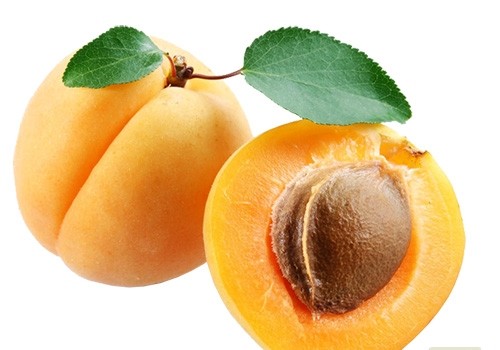
Reflection fruit trees lately, as they say, in trend. A tree-garden with multicolored juicy fruits is a real miracle created by nature and human hands. It is worth only trying to do at least one vaccination, and it will be impossible to stop.




